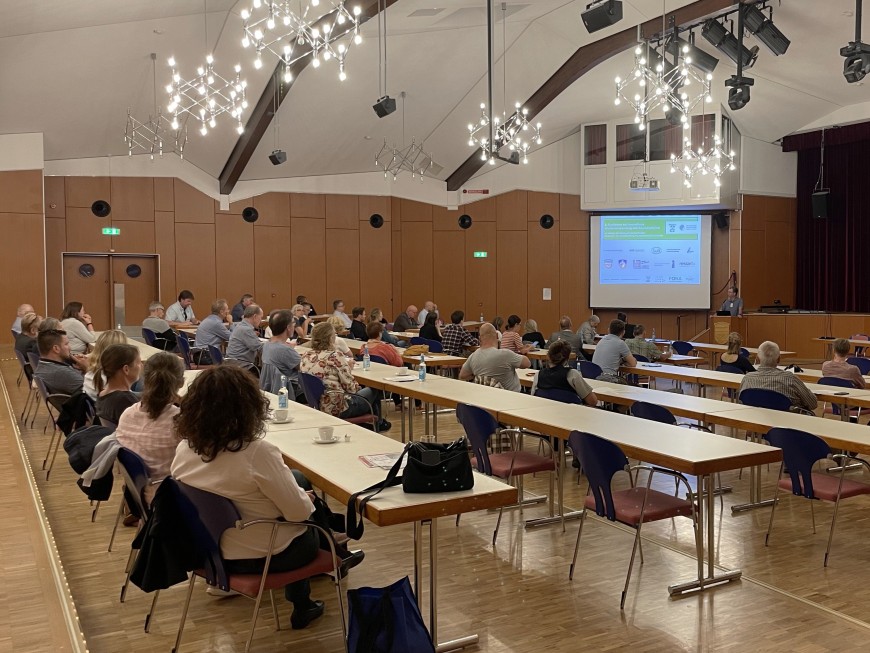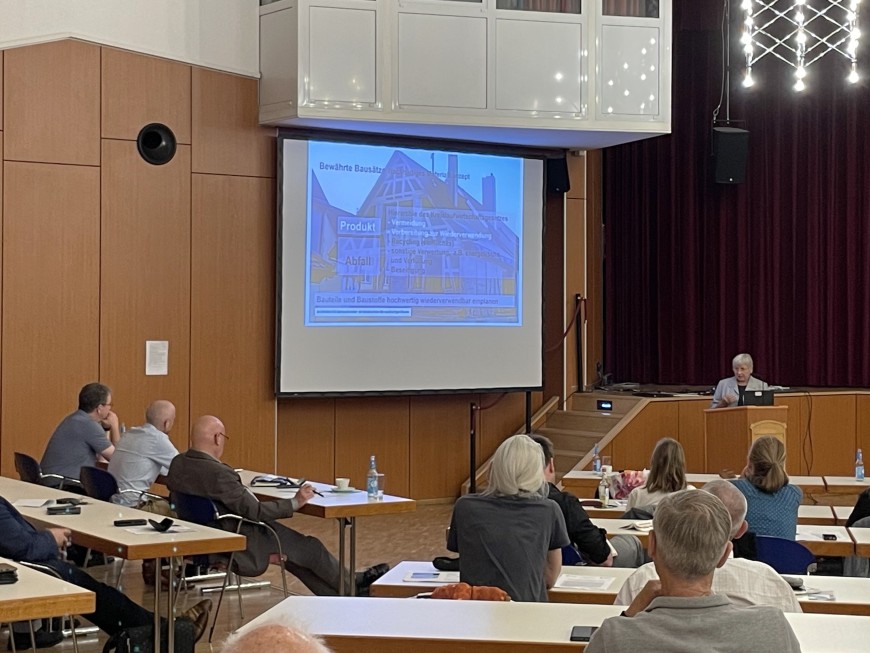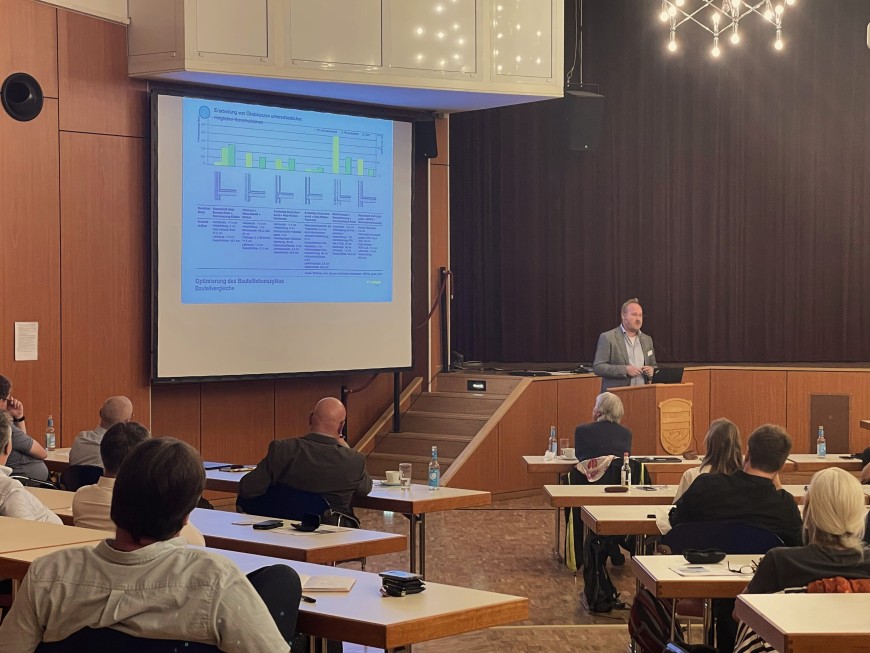Reuse instead of disposal must become normal
2022/09/19
The construction sector is one of the most material-intensive and climate-damaging economic sectors of all. The question of how to conserve valuable resources and reduce CO2 emissions is more topical and important than ever in view of climate change and the energy crisis. The research project “WieBauin” offers innovative solutions with the “Bauteilkreisel Region Darmstadt-Dieburg”. These and other approaches were recently presented and discussed at a conference in Münster (Hesse) with over 60 participants.
Growing conurbations and booming cities – as in many places in the Rhine-Main region – are extremely hungry for energy and resources. The raw materials needed for this, for example sand for concrete production, are mostly extracted in rural regions that suffer from the environmental impact. At the same time, the construction sector is responsible for around 55 percent of Germany's total waste. Especially since much of what ends up in the rubbish could actually still be used elsewhere. The CO2 footprint is also huge: according to the German government, about 14 percent of Germany's total greenhouse gas emissions can be traced back to the building sector. High time, then, to change something in view of climate change and the energy crisis.
In the research project Reuse of Building Materials Innovative, or WieBauin for short, funded by the Federal Ministry of Education and Research, new approaches have already been developed for several years to improve the material flow system between urban and rural areas and to make the building sector more sustainable. The reuse of building materials offers many advantages: it saves the energy needed for new production, reduces CO2 emissions, conserves natural raw material resources and reduces construction waste. This idea gave rise to the “Bauteilkreisel Region Darmstadt-Dieburg”, an online platform for the reuse of building materials that has combined many advantages under one roof since the end of 2021. For example, citizens can trade used components and other building materials on a marketplace or use the material yield calculator to find out about their own CO2 savings potential, achievable sales prices and potential pollutant loads of their components.
“Parship” for used building materials
At the first conference on the innovative reuse of building materials on 8 September in the Kulturhalle Münster (Hesse), more than 60 experts and interested parties came together to discuss this topic of the future. As project partners from the district and municipalities, the first district councillor Lutz Köhler and the two mayors of Münster and Otzberg, Joachim Schledt and Matthias Weber, emphasised the great potential of component reuse. By way of introduction, the head of the WieBauin research project, Prof. Dr Hans-Joachim Linke from the Technical University of Darmstadt, gave a more detailed presentation of the Bauteilkreisel, which he described as a “parship for used building materials”. The platform has been online since October last year and can be used by all interested parties who have components they no longer need or are looking for. The concept is constantly being expanded and will soon include many illustrative best practice examples for inspiration.
This was followed by a lecture on the topic of “Closing the loop – high-quality reuse of building materials” by architect Ute Dechantsreiter from Bremen from the Bundesverband bauteilnetz Deutschland e. V. (Federal Association of Building Materials Networks in Germany). She is the founder of the first ever building component exchange in Germany and was able to report from a wealth of experience. Afterwards, architect Dr. Martin Zeumer from ee concept GmbH spoke about “Building-related environmental impacts: The role of reuse of building components”. He also emphasised: “We can only survive if we are convincers. Architects in particular should use tenders to support recycling. He showed how to optimise the life cycle of a component and a building.
Experiences from the user perspective
Bernfried Kleinsorge provided an experience report from the practice of reuse on the topic ”Reuse of building materials and components: Possibilities and experiences – problems and solutions“. He described from the user's perspective the difficulties and obstacles he has encountered over the years in the renovation of two courtyard areas by reusing a wide variety of building materials and components, and pointed out solutions.
Afterwards, the co-founder of restado GmbH as well as Concular GmbH, Julius Schäufele, explained in his lecture of the same name, ”How we achieve circularity in the building sector“. He emphasised that materials should be kept in circulation and ideally no more waste should be produced. With the Concular software, this cycle can be organised. Buildings are digitised in material passports and supply and demand are thus brought together automatically and at an early stage. At the end of the event, there was a lively panel discussion. The idea of a round table of component reuse was also suggested, in which all interested parties – from experts to citizens – can participate. Because there is still a lot to do before the motto ”reuse instead of waste“ has found its way into our everyday lives and become the ”new normal“. A lot of support is needed.
Information and contact
Anyone interested in joining the round table discussion can get in touch with project coordinator Raphael Bretscher (kontakt@wiebauin.de). The Darmstadt-Dieburg ”Bauteilkreisel" (component circle) and all information about the project can be found at www.bauteilkreisel-dadi.de.








